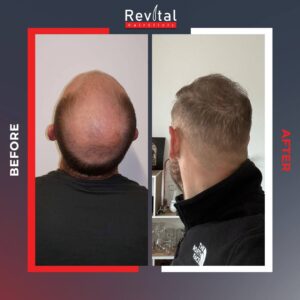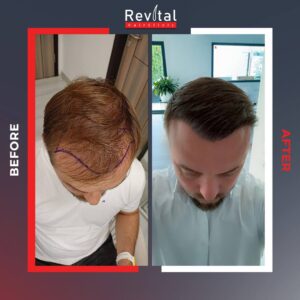How is FUE Hair Transplantation Performed?
Hair loss can have a significant impact on a person’s confidence and quality of life. Fortunately, modern hair restoration techniques like FUE (Follicular Unit Extraction) provide an effective and minimally invasive solution for those looking to restore their hair. FUE is one of the most popular methods of hair transplantation due to its precision, natural results, and minimal downtime.
In this article, we’ll walk you through the detailed steps of how FUE hair transplantation is performed, helping you understand the procedure, recovery, and the benefits it offers.
What is FUE Hair Transplantation?
FUE (Follicular Unit Extraction) is a hair restoration technique where individual hair follicles are extracted from the donor area (typically the back or sides of the scalp) and transplanted into the recipient area where hair loss or thinning has occurred. Unlike traditional methods, such as FUT (Follicular Unit Transplantation), which requires a strip of scalp to be removed, FUE extracts hair follicles one at a time using a small, circular punch tool.
This technique is popular because it offers minimal scarring, quicker recovery, and natural-looking results.
Step-by-Step Guide to FUE Hair Transplantation
Here’s a detailed breakdown of how FUE hair transplantation is performed:
- Initial Consultation and Evaluation
Before the procedure, you’ll have a consultation with a qualified hair transplant surgeon to assess your hair loss and determine if FUE is the right option for you. During this consultation:
- Scalp examination: The surgeon will examine the condition of your scalp and hair loss pattern.
- Donor area assessment: The surgeon will assess the donor area (typically the back of the head) to ensure it has enough healthy hair follicles for extraction.
- Personalized plan: The doctor will create a tailored plan for your hair restoration, including the number of grafts needed and the design of your new hairline.
- Health evaluation: Your overall health will be reviewed to ensure you are a good candidate for the procedure.
- Preparation for the Procedure
On the day of the procedure, the surgeon will make sure that you are comfortable and ready for the treatment:
- Local anesthesia: The scalp is numbed with a local anesthetic to ensure you don’t feel any pain during the procedure.
- Trimming of hair: In most cases, the donor area is trimmed to facilitate easy extraction of follicles. Some clinics may choose to shave the entire scalp, depending on the procedure.
- Marking the recipient area: The surgeon will carefully mark the recipient area (the areas with hair loss) and plan out the hairline design for a natural look.
- Hair Follicle Extraction
The extraction process is the core of the FUE method and involves removing individual hair follicles from the donor area:
- Small punch tool: The surgeon uses a small, circular punch tool (typically 0.7mm to 1mm in diameter) to extract individual hair follicles from the donor area. The punch tool is precise, ensuring that only hair follicles are removed without damaging surrounding tissue.
- Follicle extraction: The tool creates tiny circular incisions around each follicular unit, allowing the surgeon to remove hair follicles one by one. These follicles are then carefully stored in a special solution to keep them viable during the transplantation process.
- Minimal scarring: Since the holes created by the punch tool are tiny, they heal quickly and leave minimal scarring, usually dot-like scars that are virtually undetectable.
- Preparation of the Recipient Area
After the follicles are extracted, the next step is to prepare the recipient area, where the hair follicles will be implanted:
- Creating tiny incisions: The surgeon uses a fine needle or scalpel to create small incisions in the recipient area. These incisions are made at the correct angle and direction to mimic the natural growth pattern of your hair.
- Customization: The angle, depth, and density of the incisions are customized based on the patient’s natural hair growth and desired hairline. This ensures that the final result looks as natural as possible.
- Hair Follicle Implantation
Once the recipient area is ready, the extracted hair follicles are carefully implanted:
- Implanting the follicles: The surgeon places the individual hair follicles into the incisions created in the recipient area. The placement is done with precision to ensure that each follicle is aligned with the natural hair growth direction.
- Hairline design: Special care is taken to create a natural hairline, ensuring that the transplanted follicles blend seamlessly with the surrounding hair.
During this step, the surgeon may also focus on creating density in areas where hair loss is more prominent.
- Post-Procedure Care and Recovery
After the FUE hair transplant is complete, there are a few important post-operative steps to ensure proper healing:
- Bandaging and protection: A light bandage may be applied to the donor area to protect it. Patients are typically advised to wear a protective cap for the first few days after the procedure.
- Post-operative instructions: The surgeon will provide detailed care instructions, including how to wash your hair, avoid certain activities (e.g., strenuous exercise), and protect your scalp from sun exposure.
- Swelling and discomfort: Some swelling and mild discomfort are common in the first few days, but these usually subside quickly with the help of pain medication and proper care.
- Follow-up appointments: The surgeon will schedule follow-up appointments to monitor the healing process and ensure everything is progressing as expected.
What to Expect After the Procedure
- Initial shedding: In the first few weeks after the procedure, you may experience shedding of the transplanted hair. This is completely normal and part of the natural growth cycle.
- New hair growth: After about 3 to 4 months, the transplanted hair follicles will start to grow new hair. Over the next 12 months, the hair will gradually become thicker and fuller.
- Permanent results: Once the hair has fully grown in (usually 12 to 18 months after the procedure), the results will be permanent, as the transplanted follicles are genetically resistant to hair loss.
Why Choose FUE Hair Transplantation?
FUE hair transplantation offers numerous benefits, including:
- Minimal scarring: The tiny incisions made during the procedure leave virtually undetectable scars.
- Faster recovery: Since the procedure is minimally invasive, recovery is quicker than with other methods.
- Natural results: FUE allows for the creation of a natural-looking hairline and dense coverage.
- Permanent results: The transplanted hair grows naturally and permanently, providing long-lasting outcomes.
- Minimal discomfort: The procedure is relatively painless, and the recovery process is straightforward.
⚕️ Consult with a Specialist
If you’re considering a hair transplant, FUE is one of the most advanced and effective options available. It’s important to consult with a qualified and experienced hair transplant surgeon to determine if FUE is right for you. A professional consultation will help you understand the process, evaluate your suitability, and achieve the best results.
At Revital Hair Clinic, we specialize in FUE hair transplantation and are committed to helping you restore your hair and confidence.
Contact us today to schedule your consultation and take the first step toward a fuller, more youthful look!
Revital Hair Clinic © 2024












Leave a Reply